It was November, 1852, when almost overnight, a strange sight sprang up, near Princes Bridge, in Melbourne. Canvas Town, as it came to be known, was a large tent city, set up to accommodate people on their way to the goldfields.
 Location of Canvas Town, south of the Yarra River, 1853. Detail from The most complete, popular & mercantile map of Melbourne, Victoria
Location of Canvas Town, south of the Yarra River, 1853. Detail from The most complete, popular & mercantile map of Melbourne, Victoria
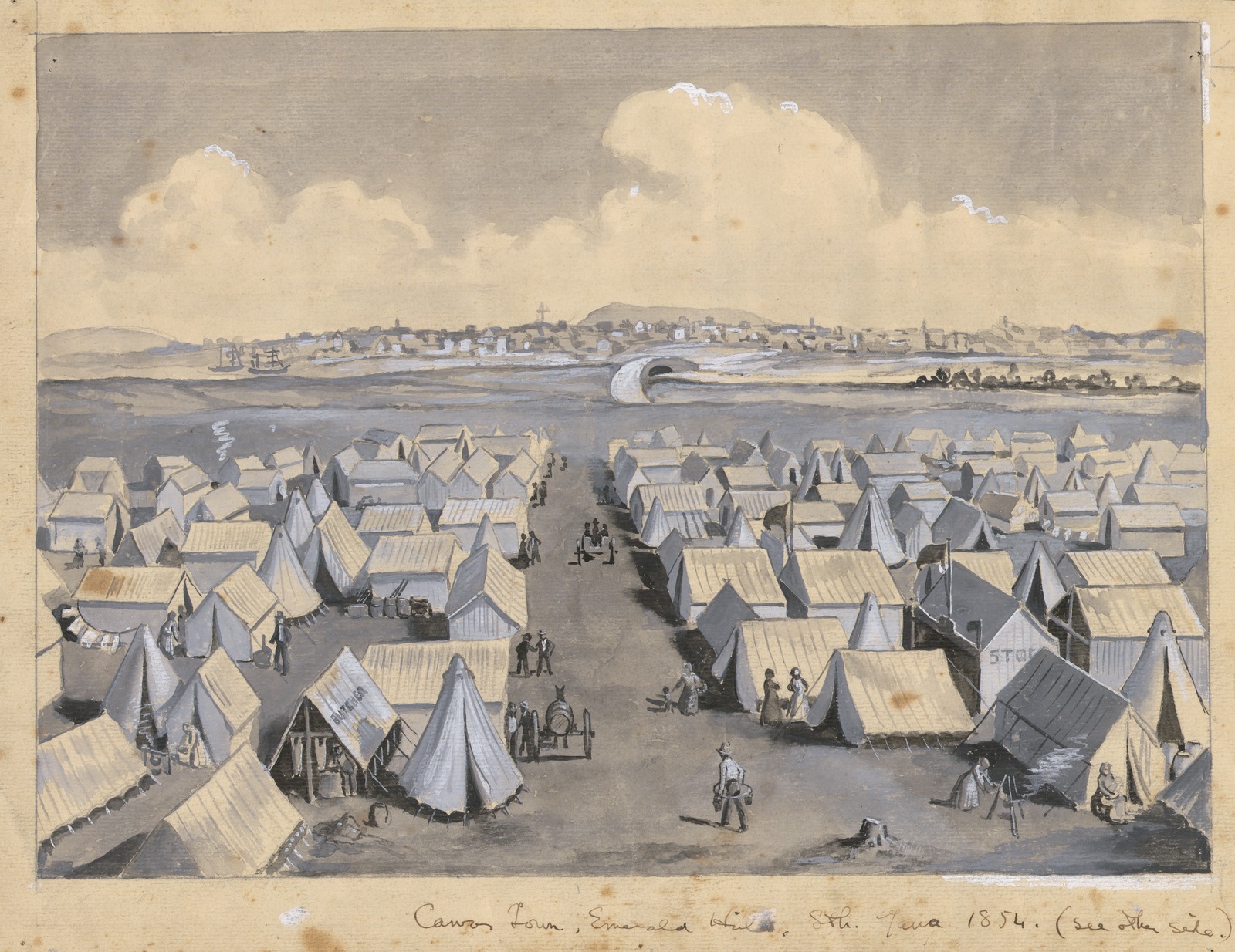 Canvas Town, Emerald Hill, Sth. Yarra, 1854. Watercolour painting by Raymond Lindsay; H13574
Canvas Town, Emerald Hill, Sth. Yarra, 1854. Watercolour painting by Raymond Lindsay; H13574
Thousands of immigrants had been arriving daily, only to find they had nowhere to stay:
Five weeks since I landed with my husband and seven children, and hired a tent at the weekly rent of 1 pound, and even up to the present time find it impossible to procure a house in Melbourne … When it rains we are saturated; at other times the sand and dust is intolerable … We can, in common with hundreds, see nothing before us but absolute starvation. (Letter from ‘An Immigrant’, The Argus, 26 January 1853)
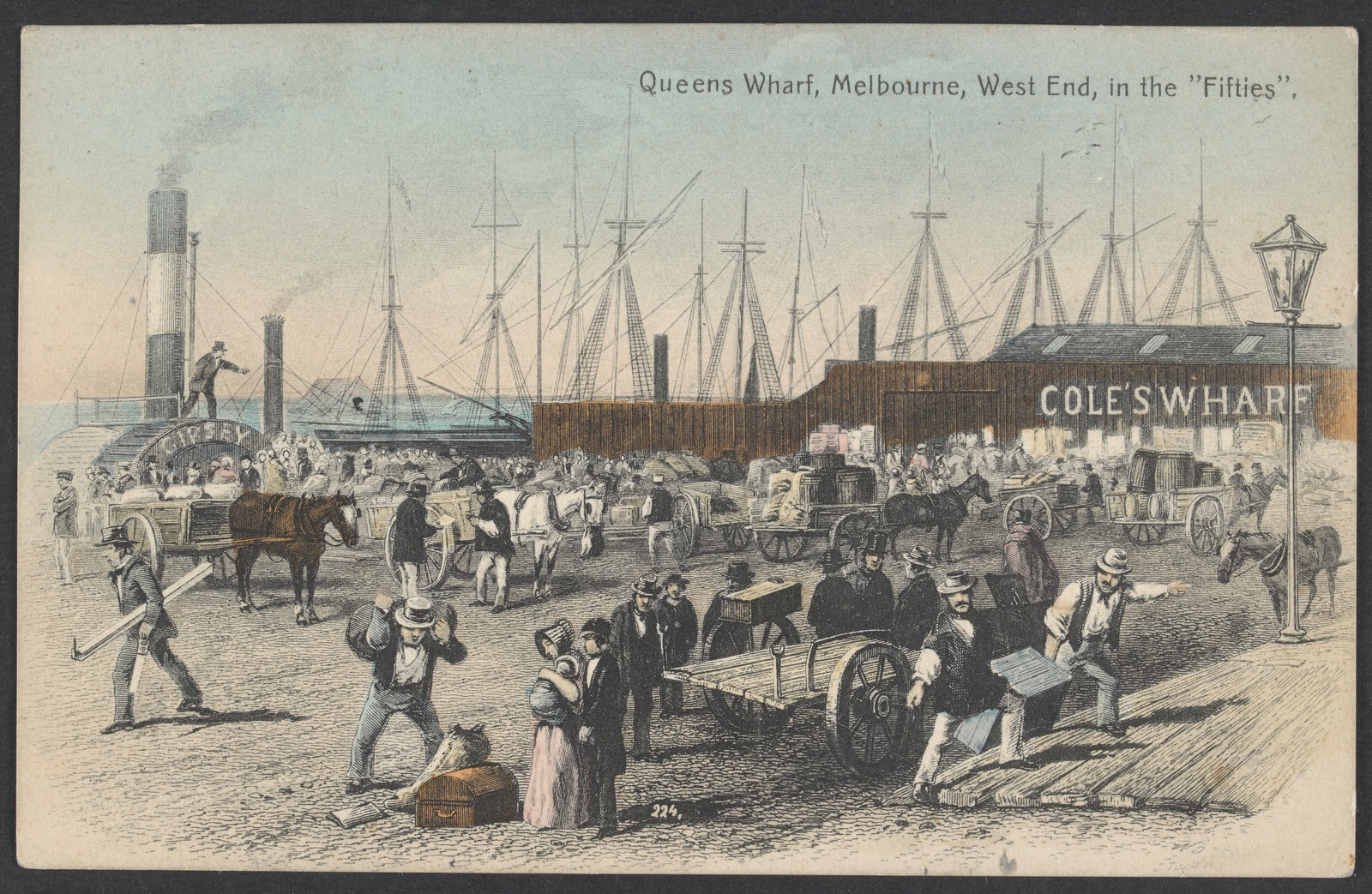 Queens Wharf, Melbourne, West End, in the “Fifties”. By S.T.Gill; H8819
Queens Wharf, Melbourne, West End, in the “Fifties”. By S.T.Gill; H8819
Eyewitnesses likened ‘Canvas Town’ to a ‘prodigiously extensive fair.’ Tents were erected in erratic rows and went by English street names such as ‘Regent Street’, ‘Bond Street,’ and ‘Liverpool Street’. There were stalls festooned with flags and streamers, and touts at tent entrances, spruiking their wares.
French photographer Antoine Fauchery described the town as a desolate place: ‘a floating city devoured by the sun, inundated by the rain, and swept away by the wind.’1
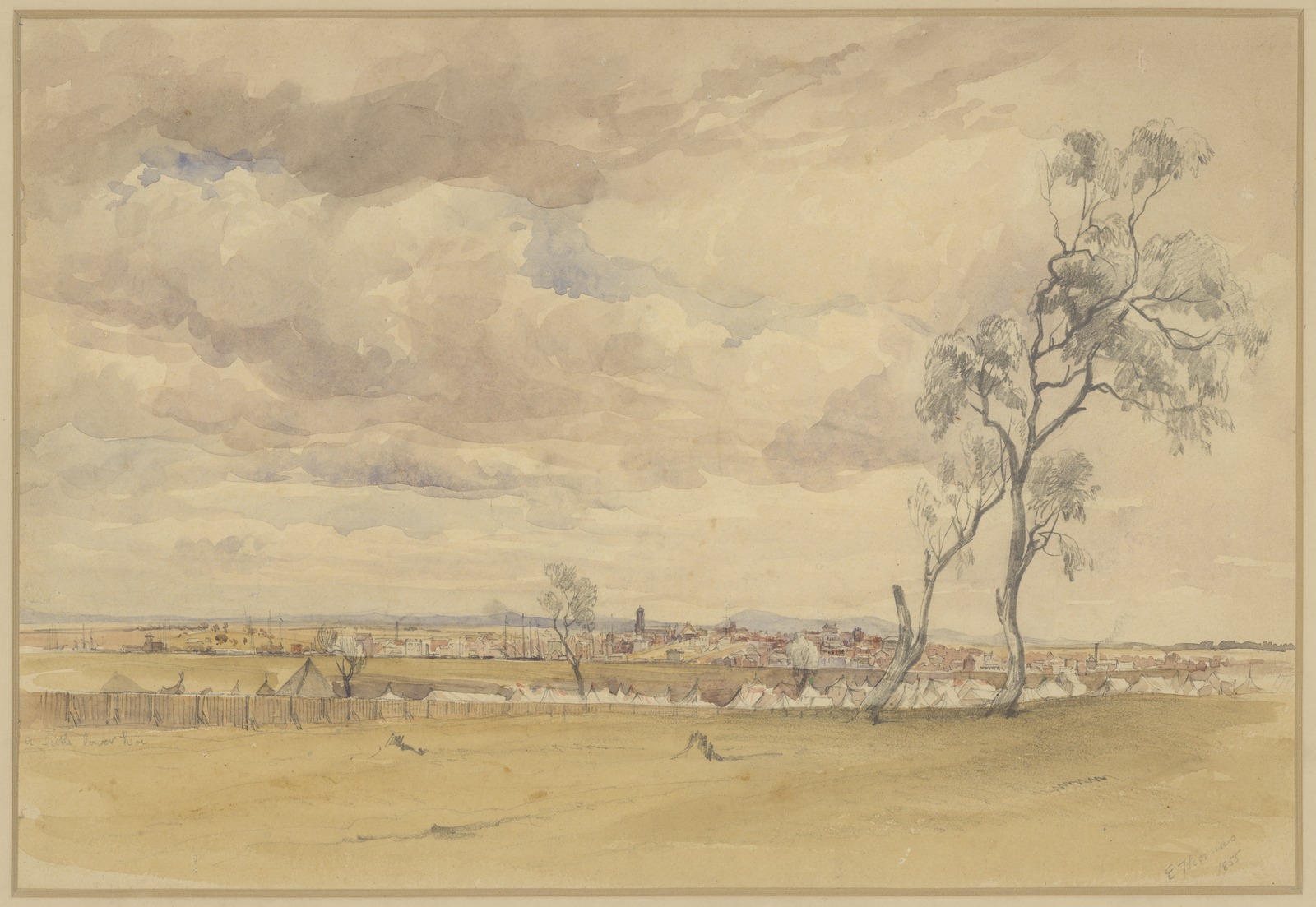 Melbourne and Canvas-Town. Watercolour painting by Edmund Thomas; H24488
Melbourne and Canvas-Town. Watercolour painting by Edmund Thomas; H24488
Many inhabitants were desperate for money, and having nowhere to store their household goods, resorted to selling them to the highest bidder:
Almost every tent exhibits slops, books, cabin furniture, or utensils, with other articles of which the owners have no need here. Nearly every second tent also sells ginger beer or lemonade. There are two physicians’ tents, who of course, are at the same time surgeons, dentists, corncutters and apothecaries. (The Banner, 26 August 1853)
Furniture, clothing, jewellery, even pianos; nothing was too big or too small. Refreshments were sold out of tents with pretentious sounding names, like the London Tea Rooms, and the Golden Lion Stores. There was even a school set up in Canvas Town, attended by 53 boys and 33 girls. You can find its correspondence records at the Public Records Office of Victoria (PROV).
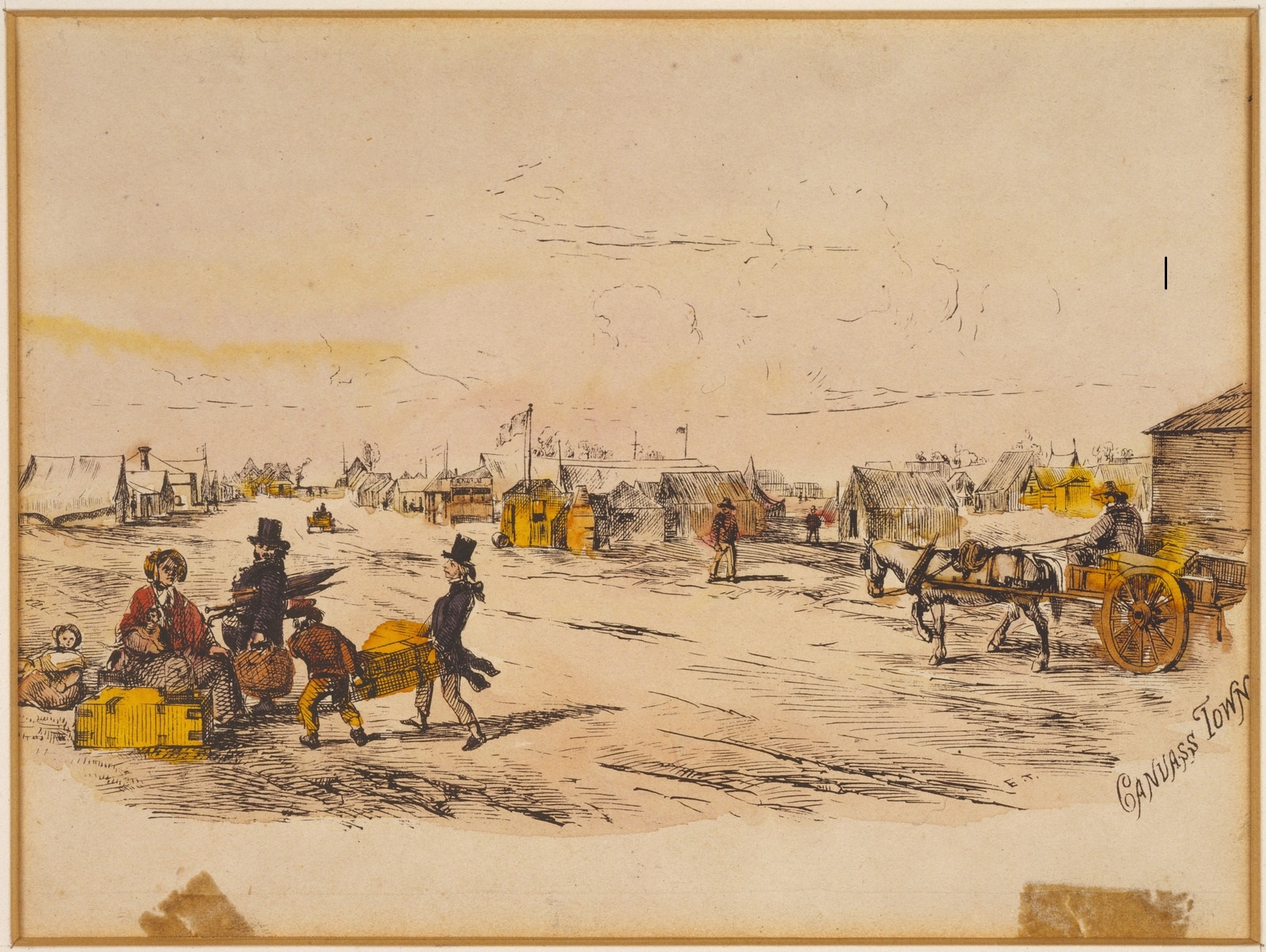 Canvass Town. By Edmund Thomas; H15520
Canvass Town. By Edmund Thomas; H15520
The tents themselves were as varied as their inhabitants: from high-end dwellings made of waterproof canvas through to tents patched together from ‘all sorts of odds and ends…bedding, clothing, blankets, sheets, aprons, petticoats, and counterpanes, or old sails and pieces of tarpaulin, matting, packing stuff, and old bits of board.’ (The Banner, 26 August 1853)
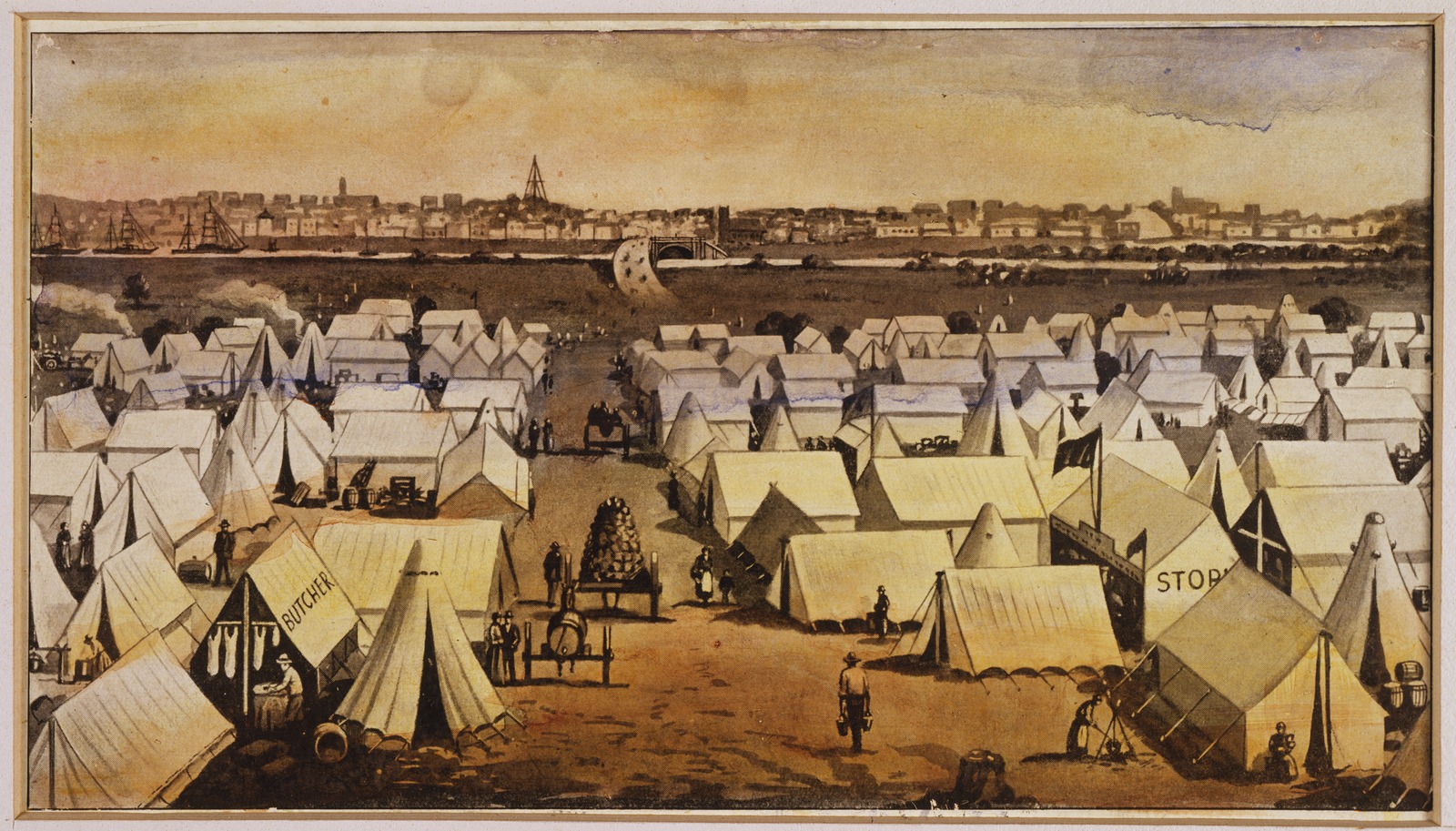 Canvas Town, between Prince’s Bridge and South Melbourne in 1850s; H25127
Canvas Town, between Prince’s Bridge and South Melbourne in 1850s; H25127
Whilst Canvas Town gave migrants some short-term respite from Melbourne’s housing crisis, it soon played host to a set of different problems. The combination of poor sanitation and cramped living quarters meant that disease was rife, and the tent city soon deteriorated into a slum. Reports of death and disease were common, such as this one from The Argus in March, 1853:
A man on Tuesday, was taken out of the European Coffee House in a sickly state, and put into a round centre pole tent, only four habitations off, where the sufferer very soon after breathed his last. In this canvas tent the body has remained in a mortifying state up to this day (Friday)… At the time I am writing this letter, the mortal remains of this man are being removed…and believe me, if the body had been exhumed in a half state of decomposition, the putrefecation could not have been worse… The Bed upon which this dead man was laid has been very properly burnt though not without a reason. It was almost a moving mass of vermin, so shockingly detestable was it to any delicate-minded individual, and all things…considered, that one could but walk away in disgust, and cry shame to that quarter who allowed such things so to be…
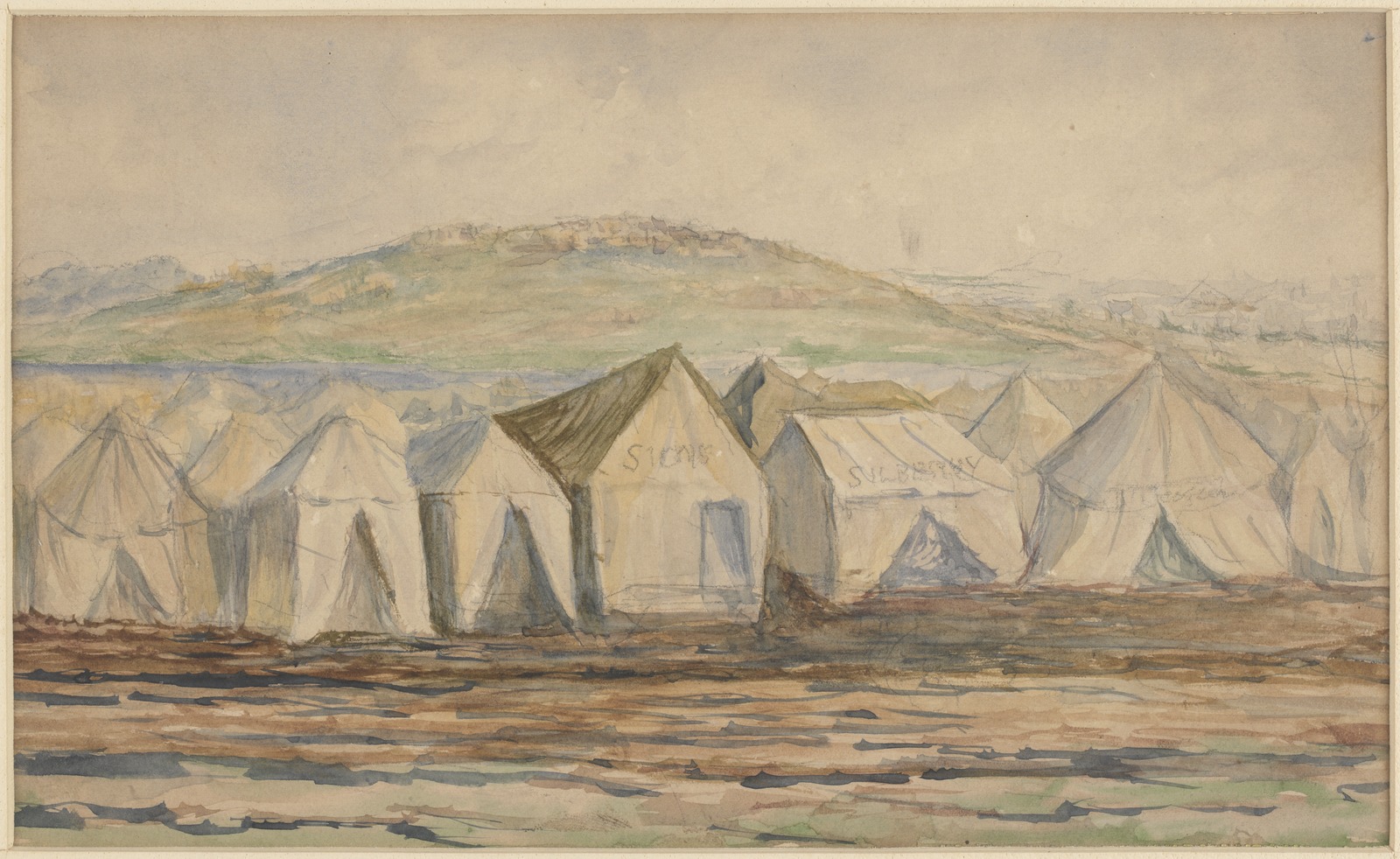 [Canvas Town, South Melbourne]. Watercolour painting by A.H.Kenyon; H13592
[Canvas Town, South Melbourne]. Watercolour painting by A.H.Kenyon; H13592
Not long after this letter was written, there was a fever epidemic in Canvas Town. A temporary ‘fever hospital’ was set up across the road to attend to the sick and dying. Between May and September of 1853, the Dorcas Society nursed 517 patients, either at the hospital, or in patients’ tents.2
In the second half of 1853, the deluge of migrants began to slow, and the need for Canvas Town abated. Word spread that the site would soon be done away with. The news was welcomed by some: ‘The place as it now exists is a disgrace to the community, and is not surpassed by “Rag Fair” or any of the back streets of London.’ (The Banner, 9 September 1853)
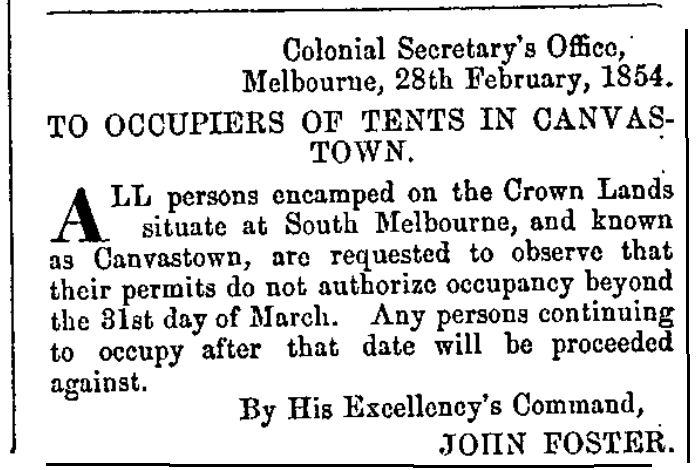
Notice from Victorian Government Gazette, 3 March 1854, p. 576
In February, the following year, a notice was issued to residents informing them that their permits were due to expire.Lingerers were promptly dispensed with and as quickly as it had arrived, Canvas Town was gone.
More to explore
Further reading
Dyson, Edward, 1920, ‘Canvas town: how Melbourne solved its first great housing problem’
Little, Alex & Mountford, Benjamin, 2019, ‘”Canvas town” – managing Melbourne’s first housing crisis’
References
- Fauchery, Antoine, 1965, Letters from a miner in Australia, Georgian House, Melbourne, p. 27
- Priestley, Susan, 1995, South Melbourne: a history, Melbourne University Press, Carlton, Vic, p. 47


My Great x 2 grandfather from Ulster: Daniel Robinson, got off the boat in 1852/3 and set himself up in Canvas Town as a prospective miner. These sketches/ Drawings are evocative reminders as to how exceedingly tough our forebears did it by today’s standards.